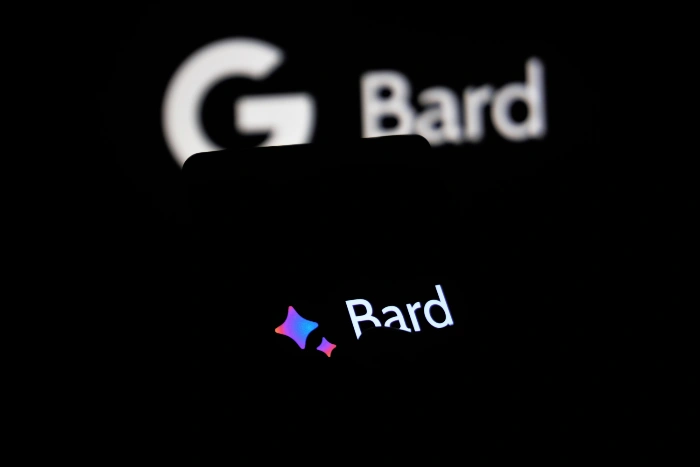This Google Bard glossary is designed to be a quick reference guide where you can easily answer any questions you may have about Bard. In the rapidly evolving world of artificial intelligence, Google has introduced “Bard,” a cutting-edge conversational AI chat service. For those diving into this technological marvel, understanding its components and implications is crucial. Here’s a glossary to help you navigate the world of Google Bard.
1. Bard:
An experimental AI chat service developed by Google. It leverages the power of LaMDA to generate text, translate languages, craft creative content, and provide informative answers.
2. LaMDA:
A state-of-the-art neural network language model trained on vast datasets of text and code. It’s the engine behind Google Bard, aiding in tasks like text generation, language translation, and creative content creation.
3. Generative AI:
A branch of AI that specializes in creating new content, be it text, images, or music. Google Bard exemplifies this, offering diverse content creation capabilities.
4. Dialogue System:
Computer programs are designed to converse with human users. Google Bard stands as a testament to this technology, facilitating discussions on myriad topics.
5. Natural Language Processing (NLP):
A domain of computer science dedicated to understanding and generating human language. Bard employs NLP to comprehend user queries and craft appropriate responses.
6. Machine Learning:
A discipline within computer science that empowers computers to learn autonomously, without explicit programming. Bard harnesses machine learning to refine its conversational abilities.
7. Deep Learning:
A subset of machine learning, it utilizes artificial neural networks to decipher data patterns. Bard incorporates deep learning to enhance its user interactions.
8. Neural Network:
Mathematical models inspired by human brain structures. Bard relies on these networks to process and respond to user inputs.
9. Dataset:
Collections of data used to train machine learning models. Bard’s proficiency stems from its training on an extensive dataset of text and code.
10. Model:
In AI, a model represents systems, like Bard, which mimics human conversation patterns.
11. Training:
The act of teaching machine learning models specific tasks. Bard’s expertise is honed through training on vast text and code datasets.
12. Evaluation:
Assessing a machine learning model’s performance. Bard’s efficacy is gauged based on its user interactions.
13. Deployment:
The act of making a machine learning model accessible for use. Bard is hosted on Google’s servers, ready for user interactions.
14. User:
Individuals like you, interact with Google Bard, provided they have internet access.
15. Developer:
The brains behind software creation or modification. Google Bard is the brainchild of Google’s elite AI team.
16. Privacy:
Rest assured, your interactions with Bard remain confidential, neither stored nor shared.
17. Security:
Safety first! Conversations with Bard are encrypted, ensuring user data protection.
18. Limitations:
While promising, Bard, being in development, has its constraints, occasionally misinterpreting queries or providing less-than-perfect responses.
19. Potential:
Bard holds promise as a revolutionary tool for communication, learning, and artistic endeavors, bridging global communication gaps.
20. Future:
With Google’s relentless AI advancements, Bard’s future shines bright, potentially evolving into an entity indistinguishable from human conversation.
21. Bias:
A predisposition that can inadvertently favor one aspect over another. While Bard is trained on extensive datasets, it’s essential to recognize the potential for inherent biases in its responses.
22. Fairness:
The principle of impartiality. Bard aims for unbiased responses, but users should be conscious of any unintended slants in its interactions.
23. Responsibility:
The duty to act ethically and for the greater good. While Bard is engineered for responsible interactions, users should be aware of its potential misuse.
24. Accountability:
The obligation to justify actions. Bard, and its developers at Google, are answerable for its performance and any unintended consequences.
25. Transparency:
The commitment to open and clear information sharing. Users can delve into Bard’s workings and training methodologies, ensuring clarity in its operations.
26. Trust:
The foundation of any AI-human interaction. Bard is designed to be reliable, but users should remain discerning and critical.
27. Safety:
Protection from potential harm. Bard prioritizes user safety, but it’s vital to be cautious of any misuse that could compromise this.
28. Ethics:
The moral compass guiding actions. Bard is built with ethical considerations at its core, but users should remain vigilant about potential ethical dilemmas in its usage.
29. Law:
A binding set of rules. Bard is crafted to adhere to legal standards, but users should be informed about any potential legal implications of its use.
30. Regulation:
The framework of laws and rules governing a domain. Bard operates within the boundaries set by governing bodies, ensuring its compliance with established norms.
In conclusion, Google Bard is not just a technological marvel; it’s a testament to the advancements in AI and the potential it holds for the future. This glossary serves as a primer for enthusiasts and professionals alike, ensuring a comprehensive understanding of this groundbreaking conversational AI.
We hope that you find this Google Bard glossary helpful and informative, if you have any comments, questions or suggestions, please leave a comment below and let us know. You can find out more details about Google Bard over at Google’s website.
Image Credit: Mojahid Mottakin
Filed Under: Guides
Latest Aboutworldnews Deals
Disclosure: Some of our articles include affiliate links. If you buy something through one of these links, Aboutworldnews may earn an affiliate commission. Learn about our Disclosure Policy.







